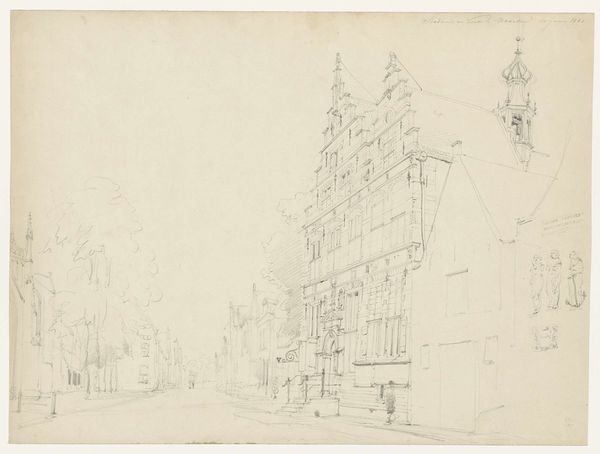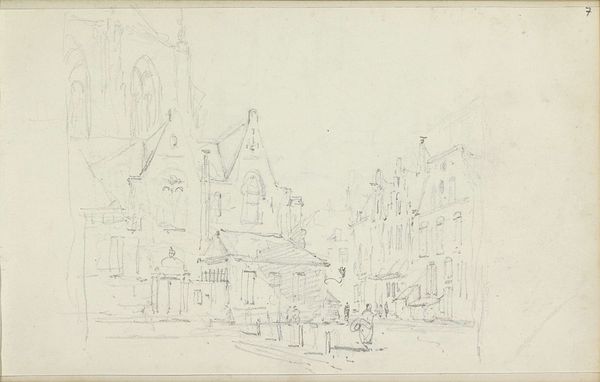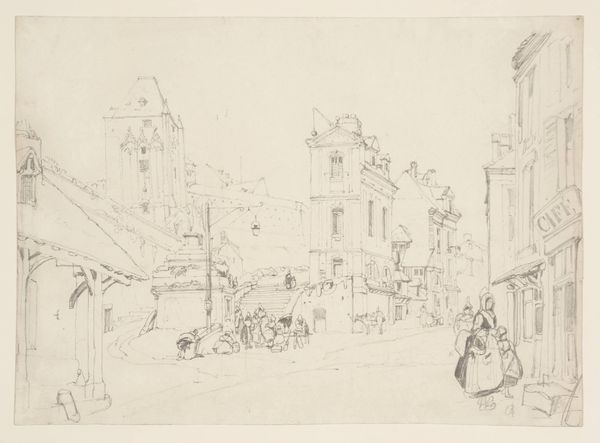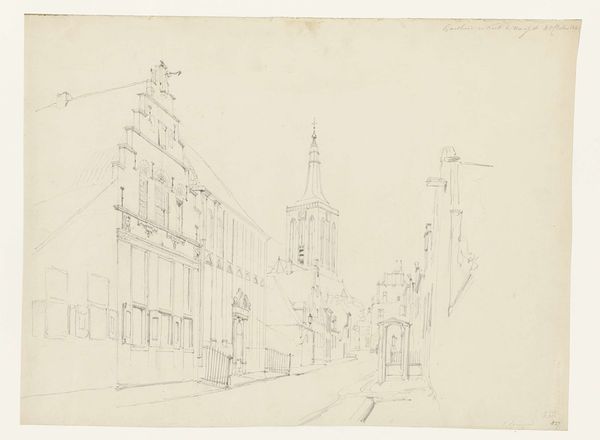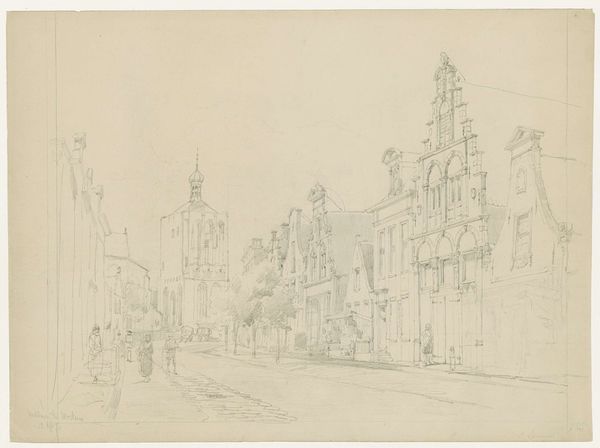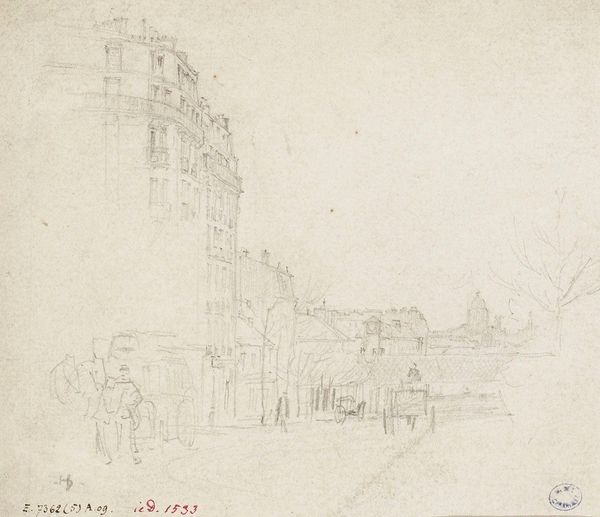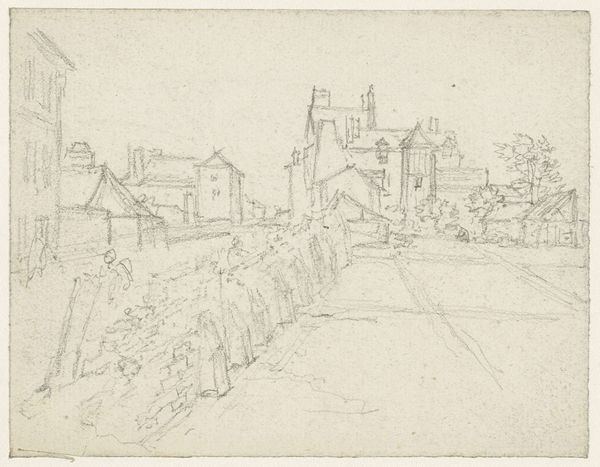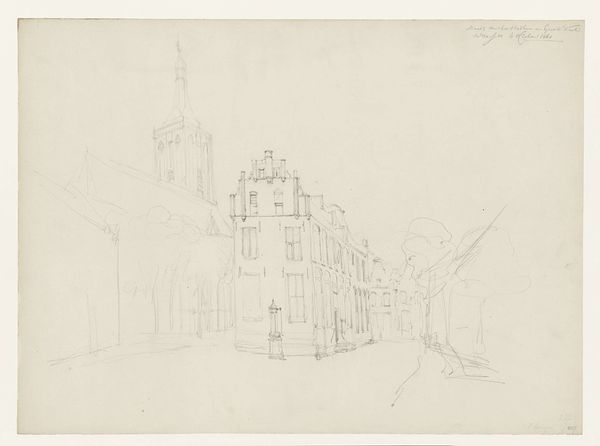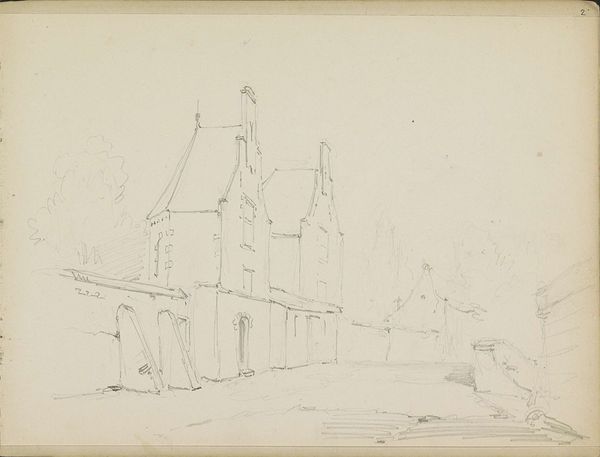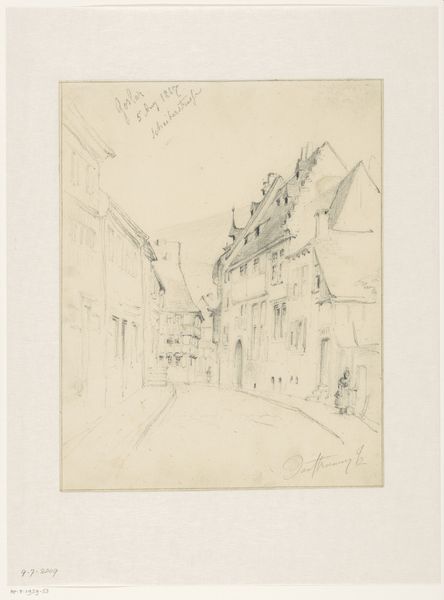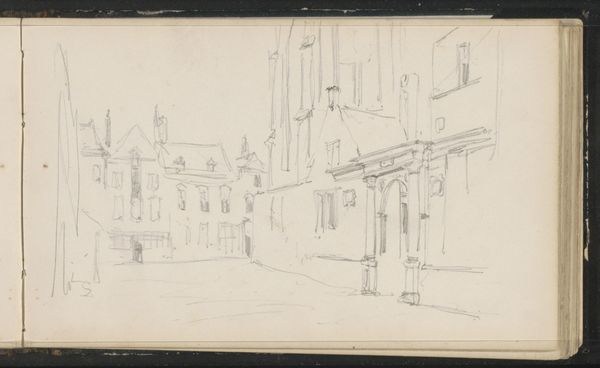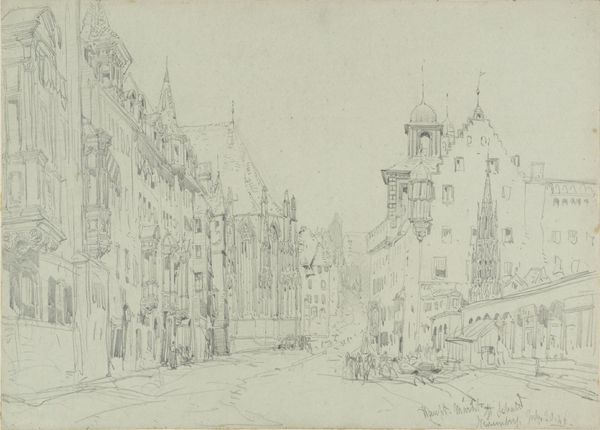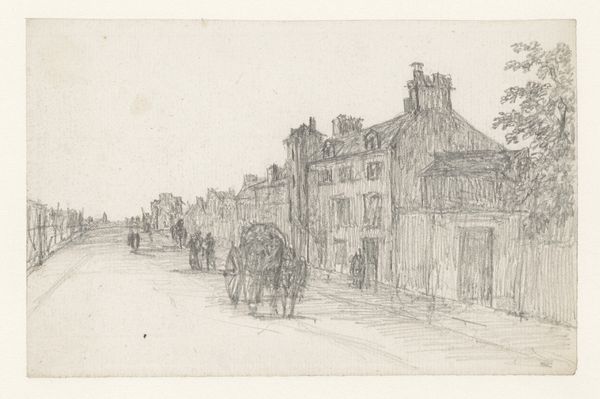
Dimensions: height 420 mm, width 558 mm
Copyright: Rijks Museum: Open Domain
Editor: This sketch by Cornelis Springer, possibly created between 1861 and 1866, is titled "Stadhuis en Markt te Naarden" – Town Hall and Market in Naarden. It's rendered delicately, just pencil on paper. It gives a palpable sense of quiet, the barest indication of activity. What visual echoes do you perceive in it? Curator: This sketch speaks to me of stability and continuity. Springer’s precise lines preserve not just the buildings of Naarden but also a shared understanding of civic pride. What feelings does the starkness of the drawing evoke for you? Editor: I notice an emptiness. But in that emptiness, a sense of longing for human connection in this urban space. Why use pencil rather than ink or even paint? Curator: Consider how a preliminary sketch can often expose a more intimate and thoughtful connection between the artist and subject. A sketch can distill the core essence of a place, simplifying details to emphasize archetypal forms: the house, the marketplace, the steeple, symbols of community. And Springer knew his Dutch architecture well, a cultural and political landscape embodied in those buildings. Editor: So the sketch becomes an emblem of memory and perhaps a dream of civic ideals? What’s striking is how resonant that architectural vernacular is today. Curator: Exactly. And does that make you think about what it meant to render this particular perspective on this particular town for his contemporary viewers? Editor: It feels timeless, in a way. A reminder that some symbols endure and continue to inform our sense of place. Thanks for shedding light on the historical context behind it. Curator: My pleasure. Looking closely, perhaps these lines of the Town Hall of Naarden invite us to contemplate on what foundations of community are made.
Comments
No comments
Be the first to comment and join the conversation on the ultimate creative platform.
